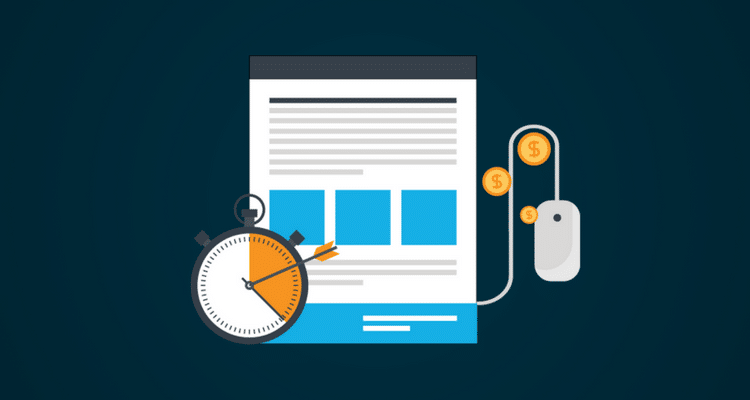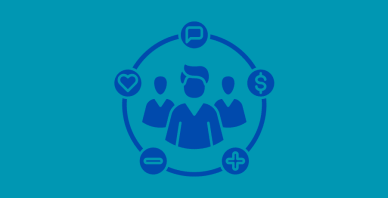Table of Contents
Last update on
Initially, most of the website owners believe that it is tough to get people to their site. On the other hand, the expert ones feel that getting people on the blog or the website is, in fact, the easier part.
The tougher thing here is getting the users to spend some substantial time on your website. Even if the engagement and the traffic on your site are quite impressive, it does take some real experimentation and work to figure out ways to make more visitors stay on your website for a longer time.
Also, users should be encouraged to navigate around and check more pages before they hit the back button or close the tab.
What is a Bounce rate?
Your website’s bounce rate is the measure of the percentage of people who clicked on your website but then bounced off from the current page without checking out the other pages.
The sooner they leave your website, the higher will be the bounce rate. An extremely high percentage of bounce rates indicates that something major is wrong with your site.
There can be several factors responsible for raising the bounce rate of your site, and there are several great techniques which can be applied so as to reduce it.
Listed below are a few ways in which you can optimize your WordPress site and reduce the bounce rate.
1- Interlink your Posts
Page views are crucial for maintaining a healthy bounce rate. You will notice an increase in the page views if you start interlinking your posts.
With the WordPress 3.1, interlinking has been made even easier as it allows you to simply search for the content that you want while adding the links.
In fact, interlinking has been proven to be useful for the sites that have a lot of articles. When you are starting out, this would seem a bit confusing, but as the content on your site grows, you will find this very easy to do.
There are several plugins such as Linkilo available too which let you link the keywords automatically in WordPress. This interlinking would not only help you in increasing the page views and reducing the bounce rate but would also help you with the SEO as well.
2- Creating Useful Content

The content on your site is what the people are there for. If they find the content not helpful or poorly written, there are high chances that they would leave. Poor content, in fact, does more than just increasing the bounce rate of your site; it lands you in a situation where you end up losing the trust and confidence of your users.
Therefore, improving the quality of your content should be your highest priority towards reducing the bounce rate. Useful content would naturally make the visitors stay for longer and even click on other pages.
When you have a website, it is your responsibility to give people what they want. This could be some helpful tips, advice, product, a giveaway or just anything else.
3- Optimize the Loading Time of Your Pages

With the advancement in technology, there is no excuse that you can give for your slow-loading website. The visitors expect a website to load within a fraction of seconds or they would leave.
Therefore, you must test the loading time of your page with the help of online tools. These tools would provide you the website’s loading time along with useful suggestions which would assist you in improving your site’s speed.
You can also use WordPress caching plugins like WP Rocket, CloudFlare or Imagify. All of these plugins have been designed to increase the speed of your site and improve the user experience.
Achieving a good loading speed for your site would go on to reduce the bounce rate of your website drastically.
4- Compress the Images
Reducing or compressing the size of your images before putting them up on the blog or site would reduce the strain that is placed on the server and in turn would help the pages to load quickly. Optimizing the images in WordPress does have a huge effect on the bounce rate of the site.
There are several online tools which you can use to reduce the size o your images. These tools would strip your images of any useless information and thereby reduce the size of the file dramatically. Most of these tools try to make sure that the quality of the image remains the same.
You could also compress your images once they are uploaded onto your WordPress site with the help of a free WordPress plugin named Imagify. This plugin would not sacrifice the quality of your image and ensure that they load quickly.
5- Use a Responsive Design

With the growth of technology, a larger number of people are accessing the web through their tablets and smartphones. This means that for a better user experience, your site must work really well regardless of whichever device they choose to use. It must be ensured that you are using a responsive design at the time when your site is under construction.
Having a responsive website means that it has been constructed in a way that all of the images, structure, layout, and content would remain absolutely the same on every device.
This helps to reduce the bounce rate happening from the mobile users. If you aren’t ready to pay for a responsive theme, you do not need to worry as WordPress has got you covered. It has several free themes which are ready to use and very responsive.
6- Make Use of the Sidebar to Feature Popular Content
Rather than filling up your sidebar with banner ads and big images, you must use it to display links to your most useful and popular content. As it is, those posts are popular compared to the rest for a reason, and you would notice more clicks on them as compared to displaying the most recent posts in your sidebar.
A plugin named WordPress Popular Posts can easily be dragged into the sidebar, and that can very easily list all your popular posts. You can even choose to add thumbnails, customize the kind of posts you want to be displayed, set a time range or even versions of it in other sidebars or the footer areas. You would also be able to look at the stats and check if these posts are increasing the views.
Wrapping up
Understanding the bounce rate of a website is rather beneficial so as to achieve a more loyal following and also for converting the site visitors into potential customers. The lower your bounce rate would be, the more successful your website would turn out to be.
You must remember that it is not possible to reduce the bounce rate overnight. It is a gradual process, and by applying all of the above-listed steps, you would be able to reduce the bounce rate significantly.



